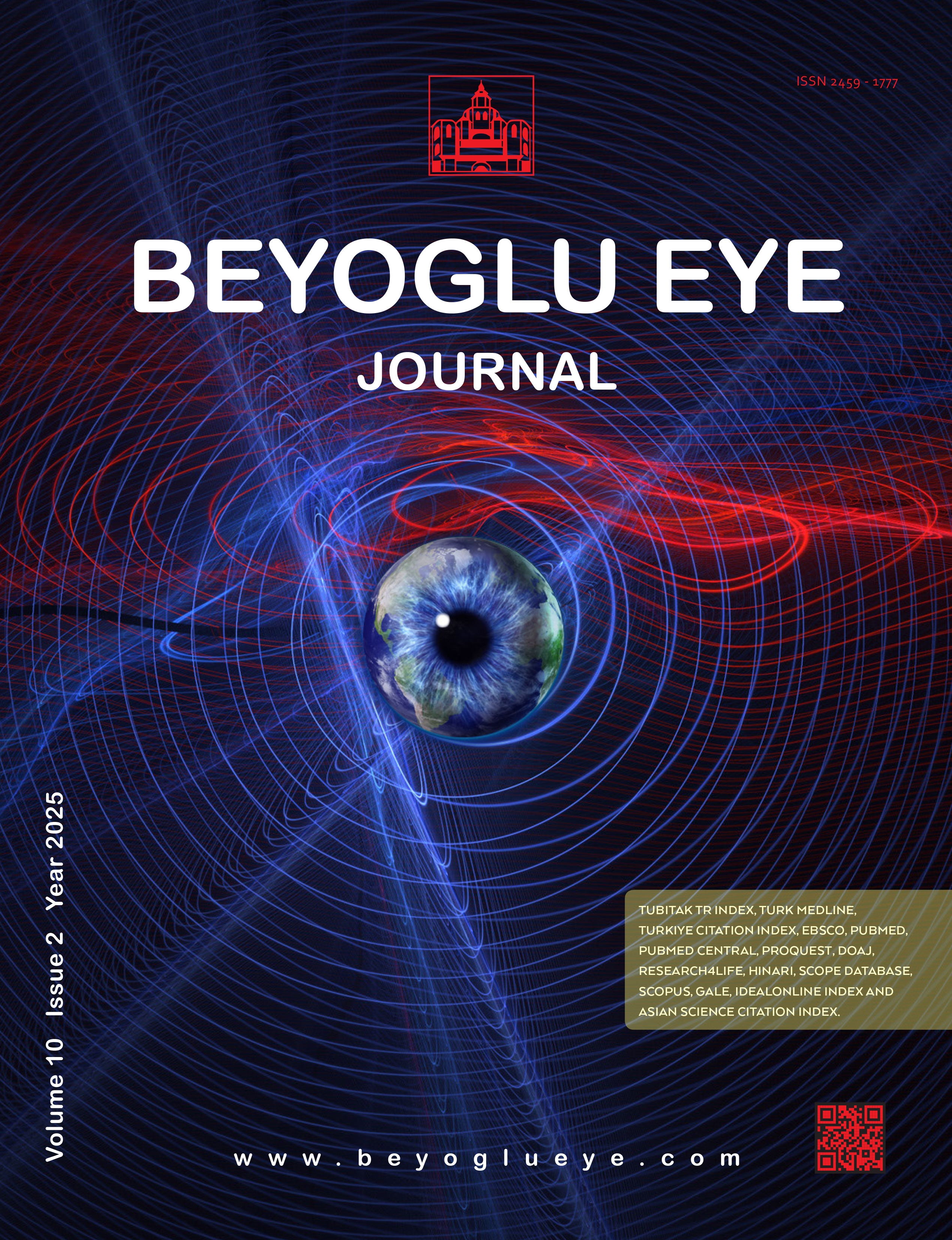
Evaluation of Retinal Inner Layer Thickness and its Relationship with Visual Prognosis in Multiple Sclerosis Patients with and Without Optic Neuritis
Kubra Kucukiba, Gozde Orman, Gulten Sungur, Nurten Unlu, Ayse BurcuDepartment of Ophtalmology, Ankara Training and Research Hospital, Ankara, TürkiyeOBJECTIVES: The objective is to evaluate retinal inner layer thicknesses in multiple sclerosis (MS) patients with and with-out optic neuritis (ON) and investigate their relationship with visual prognosis.
METHODS: This cross-sectional retrospective study examined 120 MS patients (237 eyes), including 43 with unilateral ON and 26 with bilateral ON. Retinal layer measurements were obtained using Heidelberg Spectralis optical coherence tomography (OCT), including macular retinal nerve fiber layer, ganglion cell layer (GCL), inner plexiform layer (IPL), and peripapillary retinal nerve fiber layer (pRNFL) thicknesses across multiple quadrants defined by the Early Treatment Dia-betic Retinopathy Study (ETDRS) grid.
RESULTS: Significant thinning was observed in GCL and IPL across all quadrants except the temporal region in ON pa-tients. The 3 mm nasal GCL thickness showed the strongest correlation with visual acuity (r=0.725, p<0.001) in the ON group. IPL parameters demonstrated the second strongest correlation, with the 3 mm nasal region showing the highest correlation (r=0.675, p<0.001). While pRNFL showed significant thinning in all quadrants except the nasal quadrant in ON patients, it exhibited weaker correlations with visual acuity compared to GCL and IPL measurements.
DISCUSSION AND CONCLUSION: GCL and IPL measurements serve as more reliable and earlier biomarkers for visual prognosis in MS patients compared to pRNFL. The strongest structure-function relationships were observed in the 3 mm nasal and inferior quad-rants of the ETDRS grid. These findings support the integration of OCT-based GCL and IPL thickness measurements into routine clinical practice for monitoring MS disease progression and treatment efficacy.
Manuscript Language: English








